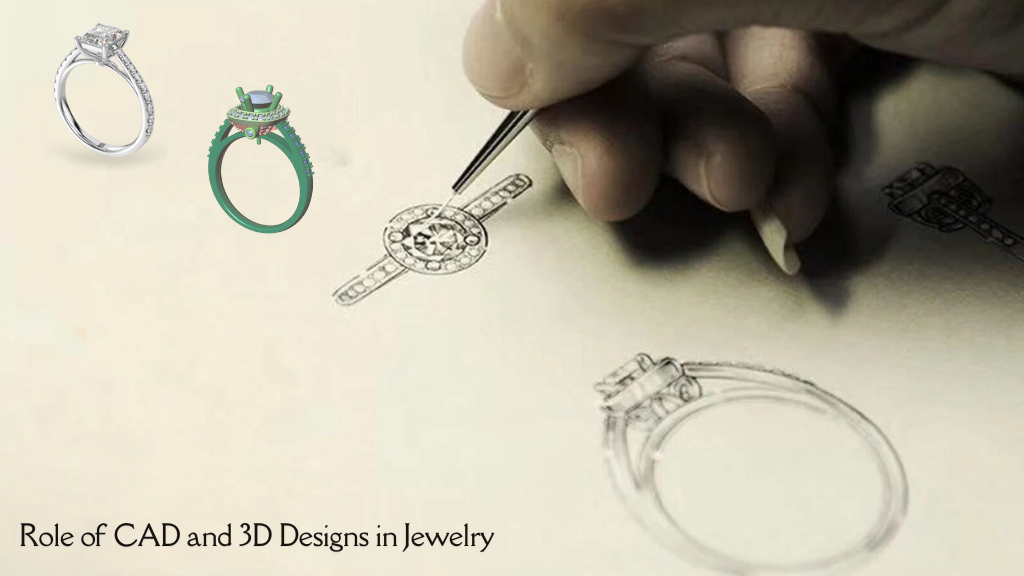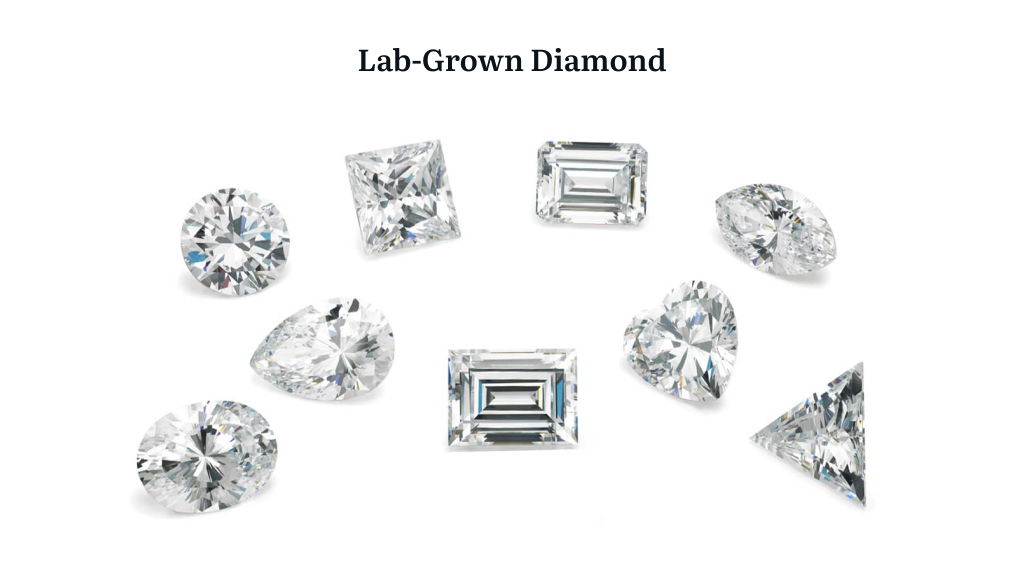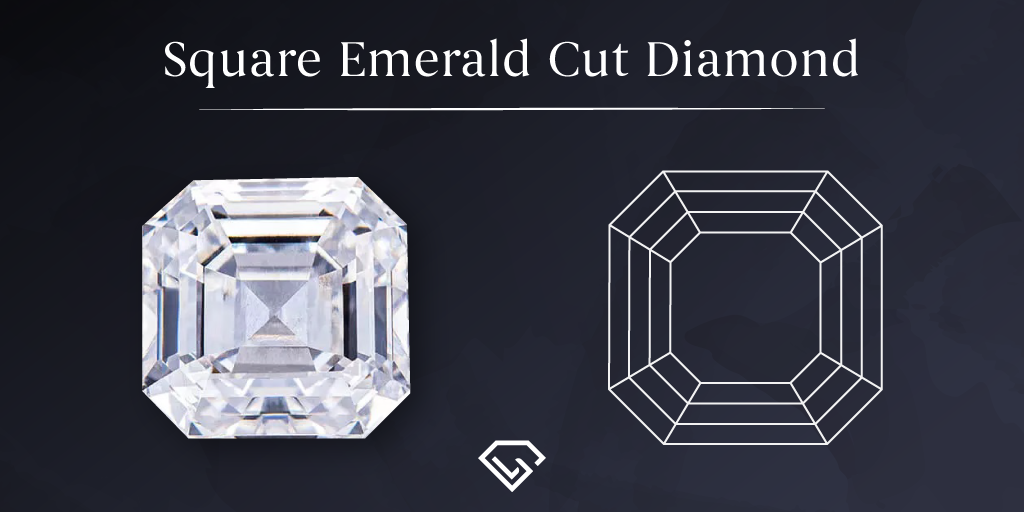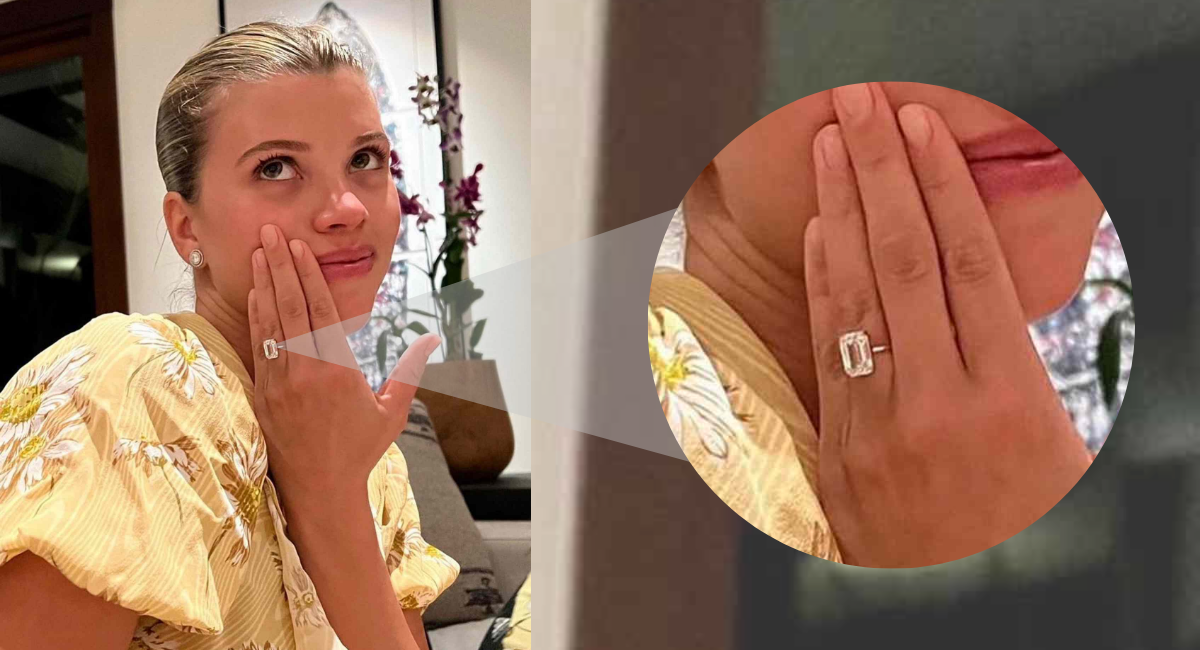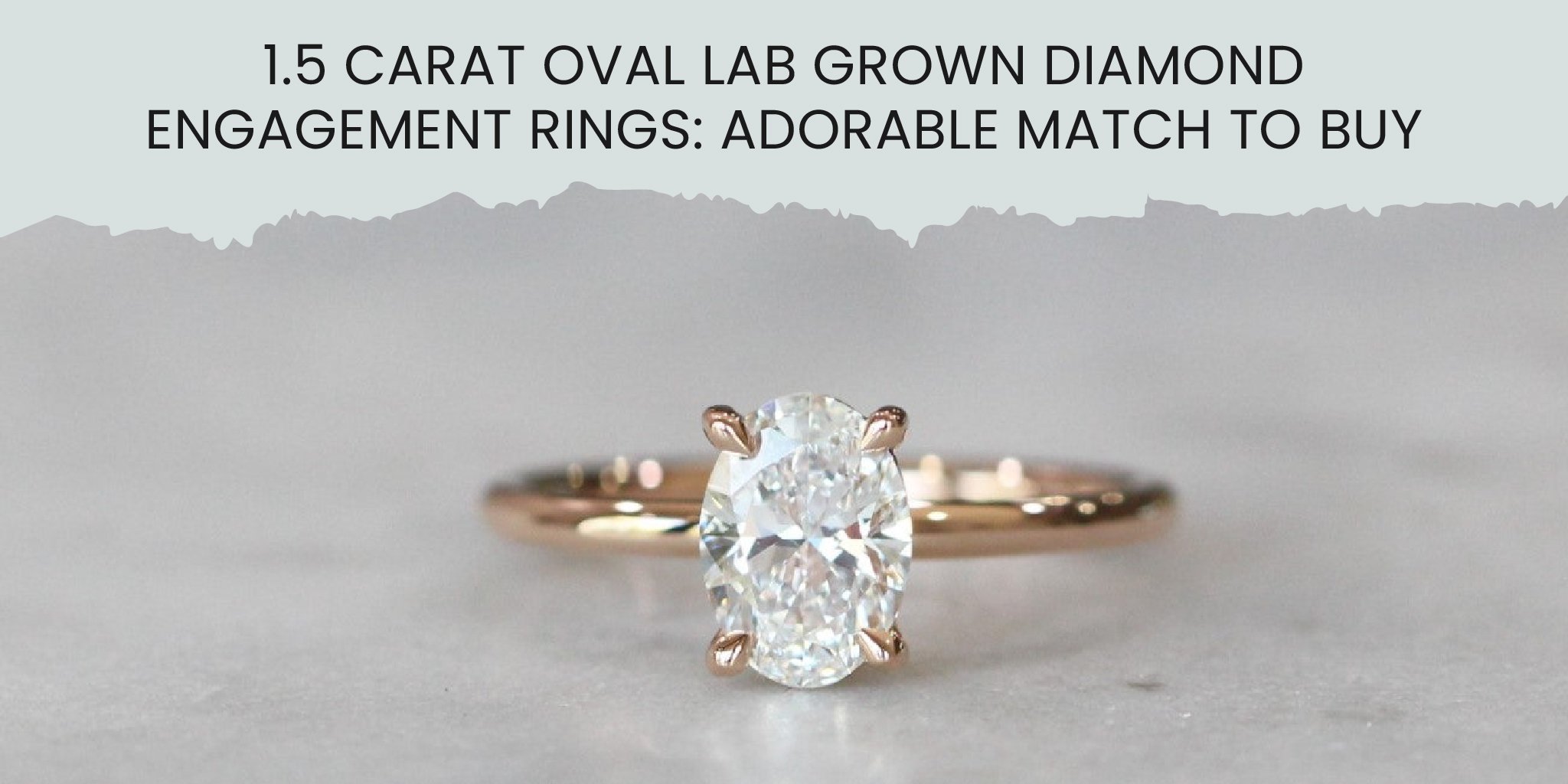What is Diamond Windowing & How should you avoid it?
What is the Windowing Effect of a Diamond or Gemstone?
When light flows through a diamond or gemstone rather than being reflected into it, it is called the diamond windowing effect.
Incorrect facet angles or inadequate proportions can cause this. When substantial light leakage is visible through the gem, it is clear that this is the case.
One example is windowing in emerald cuts which is a common thing because of their facet configurations. The angle at which light is refracted back into a gemstone is known as the critical angle, and it depends on the stone’s hardness.
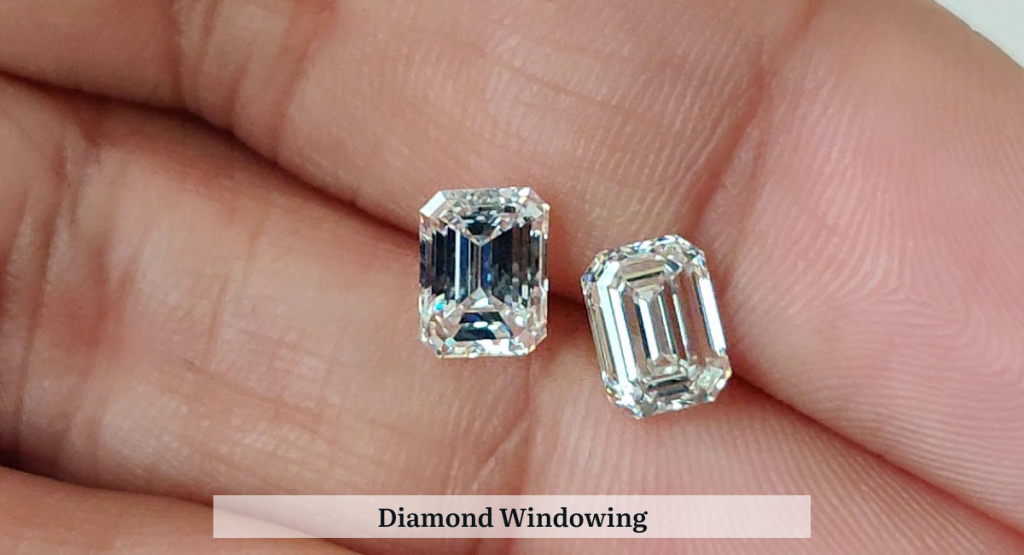
A gemstone with poor cutting quality could have facet angles that let light through, reducing brilliance. Gem cutting necessitates exact angles to minimize windowing and maximize light reflection.
Cutters may intentionally create gemstone windowing by prioritizing color preservation or weight retention over brilliance. To remain high-quality and brilliant, windowing must be understood and avoided for diamonds and other gemstones.
Hold a diamond or gemstone using tweezers to determine if you can see through it quickly. If so, this indicates extensive light leakage, known as windowing.
As an alternative, look at the stone in various lighting settings. If the top view looks translucent, windowing is probably present.
How to Identify Windowing in Diamonds?
When buying gemstones, it is essential to recognize windowing in diamonds since it can considerably reduce the piece’s value regardless of the stone’s carat weight.
Look for indicators of leaking light, such as the gemstone’s ability to reflect on tiny texts when placed on a newspaper.
Furthermore, note whether the stone seems less brilliant in different lighting settings and check the crown facets for lack of light reflection or blackness. Look for unusual proportions because windowing can come from deep or shallow incisions, both.
Beware of diamond sellers who try to increase brightness through side facets because the top-down light entry should be given importance.
How Vital is Cut Quality in Preventing Windowing?
The main goal of a diamond’s cut is to find a good mix between brilliance, dispersion, and scintillation.
High cut quality makes the stone look good and maintain its appeal for years to come. In the stone, pavilion facets make the diamond brighter by reflecting light to the eye. While, crown facets make spreading light throughout the stone easier.
On the other hand, colored jewels value brilliance and scintillation more than dispersion because they usually have less dispersive power. So, the way colored gems are cut emphasizes their brightness for the best visual effect.
Hence, cutting plays a crucial role in preventing windowing for any type of diamond.
How Does Windowing affect Diamonds?
Windowing effects diamond’s overall appearance and ability to refract light. Windowing makes a part of the diamond appear see-through. This transparency can reduce brightness and sparkle for any stone, thus making it unappealing.
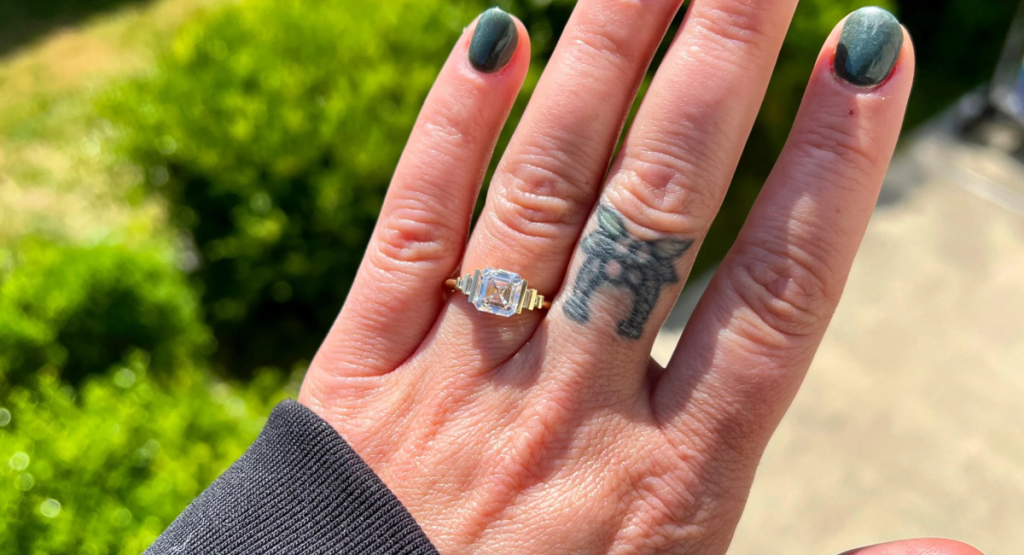
Windowing reduces light refraction in traditional brilliant cut, diminishing the diamond’s sparkle and fire.
Diamond windowing is caused by improper proportions, such as a steep crown and shallow pavilion, failing to reflect light internally, reducing brilliance and increasing transparency. Light escapes through the bottom of a shallow pavilion, producing a window-like illusion when viewed from the top.
Large table faces increase visibility through the diamond, making windowing more visible as more light travels through rather than being refracted internally and coming back up.
Windowing helps beautify non-traditional and antique diamonds. As these cuts, with tall profiles, narrow tables, high crowns with extended facets and steep angles, might purposely generate windowing for a distinct look and different light performance.
What remedies are available if my diamond already has a window?
Re-cutting or Re-polishing: Re-cutting or repolishing gemstones fixes windowing. However, it depends on the windowing intensity and gem size. Small diamonds under 1 carat that have severe windowing, will find recutting problematic. As recutting can lower carat weight by 50%, depending on the severity of the cut. Before proceeding, consider factors like carat weight reduction and trimming fees. Repolishing pavilion depth and table size improves brilliance but might also lower weight.
Choosing the Right Setting: The correct setting may hide windowing. A bezel or halo can hide windowing. A bezel with a metal rim and a halo setting with smaller diamonds hide the transparency. Making windowing is less obvious in these settings.
How to Stay Away From Windowing?
Choose light-performing cuts like round brilliant or princess cuts to avoid windowing. Make sure pavilion depth and crown angles are ideal for light reflection. Review diamond grade reports and examine the gem in different lights. For the final test, quality can be assured by consulting a trusted jeweler or gemologist.
Best Setting for Diamond with Windowing
If you have a diamond with windowing, it is suggested you consult your jeweler to find the best setting. The diamond look can be affected by metal color, such as 18k gold. Rhodium plating on the ring may also help avoid the showing of diamond windowing. As mentioned above a bezel and halo setting can also help hide the windowing effect.
Best Tips for Choosing Well-Cut Diamonds
Try light performance analysis and computerized imaging in addition to typical evaluation methods. These sophisticated technologies can reveal a diamond’s optical characteristics, revealing windowing concerns. Trust your instincts and choose a diamond that shines and vibes with you for a memorable purchase.
How Can I Ensure I Purchase a Diamond Without Windowing?
Consult your jeweler before buying a diamond to avoid windowing. Look for GIA, IGI, or GCAL certifications to verify the diamond’s quality and dimensions. Check diamond transparency under different lighting conditions.
Conclusion
Maintaining the value and aesthetic appeal of diamonds and gemstones requires understanding and attention to windowing. Diamond Windowing can be efficiently minimized or camouflaged by carefully assessing gemstones, consulting with professionals, and considering cutting styles and settings. Buyers can confidently choose diamonds and gemstones if they can identify the lighter center and absence of light flashes in gemstones or distinguish between well-cut stones and those with windowing.
FAQs
Is the emerald diamond windowing issue regular?
Because of its step-cut facets, emerald diamonds are frequently used in windowing; nevertheless, excessive windowing may cause poor quality.
Are windowed Diamonds always of lower quality?
No, windowed diamonds are not always of lower quality. While the brilliance of windowed diamonds may be diminished, other factors also affect quality.
Does a window lessen the value of the stone?
If a window drastically alters a stone’s appearance or light performance, then that stone’s value may be diminished.
What is the difference between Diamond Windowing & Extinction?
In diamond extinction, poorly cut stone prevents light from returning, whereas diamond windowing has light flowing through the stone and leaving without returning to the observer’s eye.
What can be used under the gemstones when setting it on a ring to minimize the effect of the window?
When mounting gemstones on a ring, windowing effects can be reduced by placing reflective materials underneath them, such as aluminum paper, rhodium or gold.

